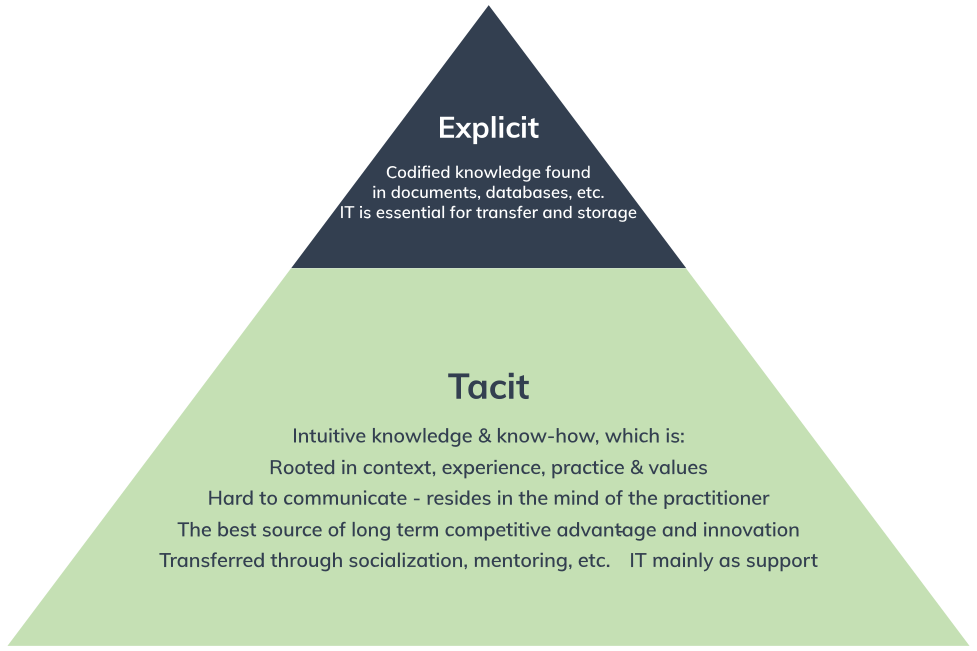
Routinely improving your business’ internal processes is crucial to your team’s ability to remain competitive and continually deliver top-notch value to your customers.
While this typically involves making slight tweaks and changes to specific areas of your operations, there will be times when a complete overhaul of your processes will be in order.
This is where business process reengineering comes in.
What is Business Process Reengineering?
Business process reengineering (BPR) is the process of fundamentally redesigning a given operation to significantly improve business performance.
The key word here is fundamental:
When implementing BPR, you’ll be making a foundational change to a given process — and to your approach to the process, overall.
(This, as opposed to making small changes to specific tasks within your existing operations. More on this in a bit.)
BPR can be applied to any type of business process, from marketing and sales to customer service and support, to production, fulfillment, and logistics. It can also be applied to internal operations, such as human resources and accounting.
(That said, BPR is often conducted with a sharp eye on how the changes made will impact the customer — whether directly or indirectly.)
Business process reengineering requires a holistic and comprehensive analysis of the process in question. Teams must understand all aspects of the process from start to finish, along with how each individual part of the process connects and impacts one another.
By taking this holistic approach, the process becomes less about merely bandaging certain parts of the operation — and more about identifying and fixing the underlying cause of a given issue. Similarly, it minimizes instances in which a surface-level change in one area ends up having a negative impact on operations elsewhere.
Some key ways BPR aims to improve business performance:
- Streamlining Processes: A common goal of business process reengineering is to tighten up and optimize workflows to keep things running as smoothly as possible.
- Eliminating Waste: BPR typically involves removing redundant processes and/or excessive resource consumption in order to keep waste to a minimum.
- Reducing Error: Streamlining processes and eliminating excesses in turn minimizes the chances of errors occurring throughout the process.
As we’ll discuss, these are just some of the immediate goals of reengineering a certain business process. Ultimately, BPR should take you beyond simply optimizing your processes “as is” — and instead lead to drastic improvements in performance for your business.
In other words, business process reengineering focuses not just on meeting a current standard — but on raising the bar to an entirely new level for the organization.
Business Process Reengineering vs. Business Process Engineering
Though business process reengineering and business process engineering are clearly related, they aren’t synonymous.
Really, they’re two completely different entities.
Again, BPR is about making fundamental, holistic changes to an operation. As such, it’s a top-down process in which an executive decision is made to overhaul an entire area of the business. From there, the appropriate team will work to create entirely new workflows to fit into this new foundational mode of operation.
The aim of business process engineering (BPE), on the other hand, is to make more laser-focused improvements to a specific process or task without making any sweeping changes to the overall way of doing things. Typically, BPE works from the bottom up, with team leads and hands-on employees identifying specific areas in need of improvement — then making the necessary changes to their workflows while leaving the rest intact.
Though they’re two separate processes, there’s a clear overlap between BPR and BPE.
For one, an overarching BPR initiative inherently involves making numerous specific changes to your workflows and operations — that is, numerous instances of BPE. For example, if you’re completely overhauling your fulfillment operations, you might end up…
- Revamping your online order processes
- Improving post-purchase messaging
- Switching to different third-party delivery services
From the other end, a singular BPE initiative may make crystal clear that a more foundational shift is needed. If, for example, making the above changes in isolation doesn’t improve your customer’s post-purchase experience all that much, it’s likely a sign that the entire operation is in need of a reset.
Key Benefits of Business Process Reengineering
Clearly, undertaking a business process reengineering initiative is done to have a positive impact on your business.
Still, it’s worth taking a closer look at the specific benefits BPR can have on your company both immediately and in the future.
1. Improved Effectiveness and Efficiency
As we’ve already discussed, all BPR campaigns aim to make the process in focus more effective and efficient.
In terms of effectiveness, the goal is to achieve better outcomes — and to do so more often. This typically equates to “doing more”, or going beyond the status quo in ways that have a major impact on the customer and the business.
Regarding efficiency, BPR aims to accomplish the above as economically as possible. At the very least, you’ll be looking to reach the same level of productivity while utilizing fewer resources. Ideally, though, the aim is to do more with less.
2. Better Resource Allocation
A key byproduct of becoming more efficient is that you’ll have more resources — material, manpower, and time — leftover after accomplishing the tasks at hand.
In turn, you’ll be able to reinvest these additional resources into other areas of your business. In this way, a successful BPR initiative can allow for further improvements in your operations — both directly relating to the area in focus and elsewhere.
Essentially, you’ll be creating an opportunity to tackle your next-highest priority while continually minimizing risk along the way.
3. Increased Innovation
In using BPR to push past the status quo, your company will become more innovative as a matter of course.
For one, your individual BPR initiatives will cause you to think beyond “the way things have always been done”, and instead look to the objectively best solution for your given circumstances. Again, more than making simple, surface-level improvements, this can lead you to revolutionize the way your company operates altogether.
What’s more, a continuous focus on innovation will help foster a culture of change throughout your team — making your organization more flexible and agile on the whole. Essentially, being innovative will facilitate even more innovation, in turn making it ever-easier for your team to make ongoing improvements over time.
4. Improved Employee Engagement, Performance, and Satisfaction
Business process reengineering can impact your employees and teams in a number of positive ways.
Firstly, effective BPR involves all stakeholders at multiple levels of the process — from brainstorming new ideas to implementation, and beyond. The simple act of involving your employees in these changes — despite it all stemming from a top-down directive — will empower them to take ownership in their new responsibilities.
Entrepreneur and CEO Chad Price explains that, when his company’s vision changed during the pandemic, he tasked his team with “applying unconventional, out-of-the-box thinking that questioned established wisdom.” He empowered his team members to “become visionaries…(who would) be able to explain the ‘big concept’ to the appropriate parties and, more significantly, persuade them to support it.”
(And, as an added bonus, this employee involvement actually makes your BPR initiatives more likely to succeed, too.
BPR also further enables the employees involved in the process being overhauled. Whether removing blockers to streamline operations or harnessing the true potential of your employees by introducing more advanced tasks and procedures, you’ll be giving your team members the opportunity to put their best foot forward like never before.
These opportunities to do more and do better in their day-to-day will then translate to more opportunities for professional and career development for the employee, as well.
Add all this up, and you have a recipe for massive employee satisfaction across the board.
5. Increased Competitiveness
It probably goes without saying that achieving all of the above will make your company more competitive within your industry.
At the very least, you’ll be maximizing productivity as you level up to your industry’s current standards. Similarly, you’ll be able to continuously stay on-level as your industry grows and evolves over time.
Ideally, your newly-reengineered business processes will put you leaps and bounds ahead of your competition — and allow you to stay ahead of the game for the foreseeable future.
6. Improved Customer Satisfaction
Once again, if you’re able to achieve all of the above, your customers are going to love you for it.
Obviously, improving your customer-facing processes to better cater to their needs will do wonders to increase their satisfaction with your company. On top of actually providing more value to them, you’ll be showing them that you’re willing to revamp your entire system in order to serve them better.
(Bluntly speaking, if your efforts only have an impact on your internal operations, but not on your customers, you may be doing more harm than good to your company.)
Even when focusing on reengineering internal processes, your efforts can still trickle down to your customers’ experiences with your company. For example, improving your inventory management practices will almost certainly help improve your fulfillment and delivery processes as well. Improving fully internal processes will also make more resources available for your customer-facing initiatives — indirectly leading to improvements in these areas.
Real-World Examples of Business Process Reengineering
To be sure, business process reengineering isn’t exactly a rare occurrence; it actually happens all the time.
In fact, even those who don’t know “business process reengineering” by its proper name might recognize some of the most popular examples of it happening in the real world.
For example…
Apple Revolutionizes Retail
If you’ve ever been to an Apple Store (and even if you haven’t), you probably know that it’s nothing like the traditional brick-and-mortar retail location.
A few highlights:
- Upon entering the store, you’ll be greeted by a customer service representative who will be assigned to you throughout your shopping experience.
- During intake, and as you browse, the rep will remain close at-hand as they learn about your needs and circumstances — and responsively point you toward the products or services that are right for you.
- When you’re ready to make a purchase, your store rep will facilitate the sale wherever you are in the store — without forcing you to become captive to a structured checkout queue or line.
Today, this is par for the course at any Apple Store.
(And, yes, many other companies have since mimicked this rather innovative approach to retail operations.)
But, it wasn’t always this way. In fact, the first iterations of the Apple Store looked…well, like any other electronics store in the late 90s.
Think of everything that had to be reengineered for all this to take place:
- Store layouts needed to be redesigned to maximize mobility and exploration
- Employees needed to be trained to embrace the new mode of operations (and to forget the “old way” of retail)
- Mobile point-of-sale technology had to be adopted to remove the need for queues, and to streamline individual checkout experiences
While this has all been standard at Apple for some time now, the company continues to implement BPR both on- and offline to consistently stay at the top of the electronics industry.
Toyota Transforms Production
Back in the 1980s, Toyota famously revolutionized the auto industry when it introduced the Toyota Production System.
This new system would quickly become the go-to model for lean manufacturing and Just-In-Time production. To this end, TPS focused on minimizing inventory, keeping waste to a minimum, and manufacturing just enough product to meet demand at any point in time.
Toyota’s system also aims to automate as much as possible — but to do so without sacrificing the human touch wherever necessary. In addition to automating many processes, Toyota also regularly purges its workflows of superfluous tasks whenever possible.
Finally, Toyota employs a form of root-cause analysis that allows the team to quickly identify the source of major and minor problems in their workflows. From there, they can attack the actual problem strategically and effectively, as opposed to continuously dealing with surface-level issues that could easily be avoided by digging a bit deeper.
These fundamental changes to the traditional approach to manufacturing required Toyota to invest heavily in employee training and enablement, improve their demand forecasting and supply chain processes, and develop super-tight workflows and protocols to operate under.
It’s a system that, in many manufacturing industries, has since been imitated numerous times — and only rarely fully replicated.
A 5-Phase Model for Business Process Reengineering
For a business process reengineering initiative to be successful, it needs to be implemented strategically and systematically.
The five-phase model we’ll discuss here will typically ensure teams cover all the bases when reengineering a process from scratch — and that they don’t overlook any crucial elements when doing so.
(Note that this is not a linear process, but an iterative one which may require teams to go back and forth between phases on their way to completing the initiative.)
1. Prepare
First, the team must prepare not just to change a fundamental mode of their operations, but also to go through the process of making said change.
Before diving in, you’ll need to identify which business processes need to be reengineered — and which ones to prioritize above the others. This may be relatively easy to pinpoint, but it could potentially require a bit more sleuthing out.
(For example, if your sales numbers are dipping, your sales process might not be the top culprit. Rather, it could be a problem with marketing, customer support, or even just your online ordering process.)
At this stage, you can conduct some preliminary research and analysis to determine:
- What needs to change, and how
- Who will likely be involved in making the change
- What resources will be required to effectively implement the change
This will help you generate buy-in and get all involved parties in alignment before digging deeper — and will give you a general idea of what it will take to get things done well.
2. Analyze
Next, you’ll want to conduct more in-depth analysis to gain a true understanding of the root cause of the issue at hand — and to begin brainstorming ways to fix it.
In short, you want to identify:
- What’s not working (or not working well)
- How it could be better
- What your capacity is for improving it
You can begin this process by mapping out your current processes in full — again, detailing the steps of the process, along with the personnel and resources involved at each of these steps.
Even if it’s immediately clear where sweeping changes are needed, you should also comb through the relevant data to confirm your suspicions and determine the best course of action.
Some data to consider here include:
- Your current KPIs, metrics, and performance data
- Employee feedback
- Customer feedback (as applicable)
- Industry standards and future projections
Rather than taking all this information at face value, work to uncover common threads that point to the root cause of the issue. In doing so, you’ll not only avoid making superficial changes to your processes, but also potentially alleviate other downstream issues you may not have identified as of yet.
3. Design
With the above data in hand, your next step will be to redesign the process in its entirety — that is, completely from scratch.
Now, this doesn’t necessarily mean that everything about the redesigned process will be completely different. If a certain part of the original workflow still fits into the new way, there’s no need to reinvent the wheel entirely.
(For example, Apple didn’t stop taking credit card payments when they adopted their mobile POS system.)
The point of starting with a clean slate is to keep your team from falling back into the old way simply because it’s already in place. Even if the old way works “well enough”, there’s likely some way it could be improved upon — and a fresh start allows you to take a more objective approach to the whole process.
The other side of this is that you don’t want to make change for the sake of change. If, after assessing your workflow in its entirety, you find that certain parts of it do work best as is, well…if it ain’t broke, don’t fix it.
All that being said, the most important part of the redesign phase is to keep your central purpose top-of-mind at all times. Whether introducing a new process or deciding to keep certain parts as is, make sure that your decision brings you closer to your ultimate goal.
(Toyota, for example, doesn’t just minimize waste in one area of production; the team works to ensure economic workflows across the board.)
Similarly, consider the impact your potential redesign will have on tangential (and even unrelated) areas of your business. Perhaps most importantly, think about how the reallocation of resources and manpower might affect other vital operations — and whether this sacrifice is worth making in the first place.
4. Implement
Once the redesign is planned in full, you can begin putting the changes into action.
This phase might include:
- Introducing new positions and team members
- Introducing new tools and technology to your workflows
- Training current employees for new positions and responsibilities
Ideally, this will be done gradually in order to effectively gauge the effectiveness of each change while also minimizing risk along the way. As your team adopts the new practices, you might conduct simulations of the process internally, or with a controlled audience, or perhaps in a real-world setting in specific locations or with specific audience segments.
For example, Nike continues to unroll multiple versions of its innovative retail redesign in high-traffic locations — while maintaining their basic storefronts elsewhere for the time being.

How you do this depends on what will work best for your business, meaning you need to consider:
- Your current capacity for change
- Your audience’s needs and expectations
- The current and future state of your industry
It’s best, then, to get a jump start on your reengineering initiatives before they become an absolute necessity. This will help you avoid the need to make sweeping changes before you’re ready merely in order to keep up with the competition.
5. Monitor, Evaluate, & Improve
Finally, you’ll need to keep a close eye on your newly-introduced processes to ensure everything is going as planned — and to make ongoing improvements as needed.
Metrics and key performance indicators are crucial here. They’ll generally align with those you’d used when assessing your old workflows, but you might need to consider even more performance data moving forward.
(In Apple’s case, they may have begun paying closer attention to individual retail dwell time, or perhaps to the average time in store altogether.)
Your assessments should always tie back into — or at least correlate to — the main goals for your initiative. For example, if your main goal is to improve customer satisfaction by streamlining the purchasing process, you need to be sure that making the POS more efficient actually leads to an increase in CSAT.
(Otherwise, you’ll have little to show for the massive investment you’d made into reengineering your POS process.)
As we said earlier, these phases are not linear, but iterative.
To this end, going back to previous phases of your BPR initiative is actually a part of the process — not something to be done only when things go wrong. Over time, at predefined intervals, and as you reach certain milestones, be sure to go back through the analysis process to potentially identify specific areas of improvement — and, if need be, to acknowledge the need for an entire redesign in the future.
Common Business Process Reengineering Solutions
While there are innumerable ways to go about reengineering a business process, some of the most common tactics include…
1. Automating
By today’s standards, automating certain processes is one of the first things teams consider when looking to optimize them.
In manufacturing, new equipment and machinery is routinely introduced to automate product development, material delivery, and resource usage. In project and team management, automated tools help keep track of communications and team progress. In customer-facing areas like sales and support, automation helps with customer intake, the delivery of information, order processing, and more.
Introducing automation technology requires a balancing act of sorts. On the one hand, it can be used to speed up processes while minimizing the use of manpower and other resources. On the other hand, going too far with automation without hands-on failsafes in place can put your entire operation at risk should things go wrong.
2. Outsourcing
Business process outsourcing is when a company contracts with a third party to take over a specific internal task or operation.
Some key processes businesses often outsource include marketing, customer service, and accounting. Some BPO partnerships are long-term and open-ended, while others are forged for a predetermined period of time to help the company overcome an immediate issue.
(For example, a company may work with a marketing agency to put together a specific campaign — or they may have the agency take over their marketing initiatives altogether.)
When outsourcing a process, it’s important to ensure that the third-party provider will operate as if they were an actual part of your company, with an actual stake in their performance outcomes. Otherwise, you’ll risk immediate damage to your operations — and potential long-term damage to your relationship with your customers.
That said, you can also dial back your outsourcing initiatives as needed — which will of course require you to reengineer the applicable processes.
CEO of TheHoth, Marc Hardgrove, believes that “outsourcing art-related tasks or coding work to freelancers defeats the purpose of a digital marketing company. Moreover, not outsourcing these tasks increases clients' faith in the company's brand. With all aspects of digital marketing done in-house, it is easier for us to retain clients.”
To this end, Hardgrove and his team have worked diligently to bring these processes back in-house and fully integrate them with their current processes.
3. Knowledge Mapping
Knowledge mapping is the process of defining organizational knowledge, creating knowledge assets, and connecting it all to fully understand the role your team’s knowledge plays in your overall operations.

In creating a tangible map of your organizational knowledge, it will become easier to make full use out of every piece of knowledge your team possesses — and to ensure none of it goes overlooked or underutilized. What’s more, it will allow you to identify knowledge gaps with ease — which you can then work to fill in through employee training and development initiatives over time.
4. Change Management
Change management is the systematic and strategic processes involved in facilitating organizational change within a company.
As such, it’s all but required to initiate effective business process reengineering. Practically speaking, change management lays the groundwork for any fundamental and transformational change that will occur over time within your organization. In this way, it helps break down silos throughout the company and allow for proper use of resources during instances of change.
It also aims to nurture a growth mindset amongst team members, making them more apt to change when the need arises. Put another way, strategic change management helps make teams less resistant to change — which, again, is all but necessary in today’s ever-evolving business world.
Best Practices for Business Process Reengineering
To wrap things up here, let’s discuss some key best practices to leverage to maximize your business process reengineering efforts.
1. Define Clear Goals and Objectives
We talked about this before, but let’s be clear:
You need to have clear goals in mind when reengineering a crucial business process.
In a broad sense, this means defining:
- The domain in which an overhaul is needed
- The rationale behind your decision to affect this change
- The overarching objective and expected outcome of the change
More specifically, you’ll want to identify the key metrics that relate to the initiative, and define the exact quantitative values you’ll be striving to achieve.
2. Involve and Connect All Stakeholders
Business process reengineering simply cannot happen successfully if everyone involved isn’t on board.
Internally, all team members — from top to bottom — need to be “all-in” with your BPR initiatives. Even those tangentially involved in the process should feel free to communicate, share input, and work together to make the change happen seamlessly. Managers and executives will need to put structures and resources in place to facilitate this cross-team collaboration, and to anticipate employee needs at all times.
As appropriate and necessary, your investors should also be kept in the loop throughout your BPR efforts to ensure they understand what changes are being made, and how it all will affect their investment. Their input may also be required over time to ensure your company stays on the right path based on their initial investment.
Finally, your customers should be involved with the change both directly and indirectly. In a direct sense, you can solicit feedback from them before making a change, and as you implement any changes that immediately affect them. You also need to ensure any internal changes you make have a positive impact on their perception of your brand — or, at the very least, don’t have a negative impact on it.
3. Invest in the Right Tools & Technology
Depending on the goals and the scope of a BPR initiative, you’ll likely need to invest in a variety of tools and technology.
- For process and knowledge mapping, consider software such as Lucidchart, Mindmanager, or Wisemapping
- Tools like Trello, Basecamp, and Asana can optimize your project and team management efforts
- Employee communication tools for real-time and asynchronous communication can be used for a variety of purposes throughout business process reengineering
- Knowledge base software to provide a central repository for storing and organizing information related to processes.
On top of the initial investment in these and other tools, companies need to invest in proper employee training with a specific focus on business process reengineering. Even if such tools are currently in use elsewhere, knowing how to leverage them for BPR purposes is vital.
4. Lean on Knowledge Management
To supercharge your team’s knowledge mapping and BPR efforts altogether, strategic knowledge management is key.
Incidentally, this means adopting the right knowledge management software for your organization’s needs and purposes. As part of the process of investing in the right technology, you may want to consider creating a knowledge base to serve as your organization's single source of truth. A knowledge base can be used to document current processes, as well as to track changes and improvements made over time. Additionally, certain features such as workflows, approvals, revisions, etc could help to streamline and automate the process of creating and approving new process documents.
With proper KM practices and technology in place, your team will always have the information they need to:
- Analyze their current processes and team business performance
- Understand and apply best practices, both internally and within your industry
- Use data and other hard evidence to define a clear path for your BPR efforts
Your team can then leverage this collective knowledge throughout your BPR initiatives to maximize their efforts and overcome trouble spots as needed. And, as you implement the changes made, you can amend your documented knowledge to reflect lessons learned and other key changes to the wisdom possessed by your team.
Use Helpjuice to Spur Business Process Reengineering
Helpjuice’s knowledge base software can help kickstart your business process reengineering efforts from the get-go — and help you build on your experiences as you get things underway.
Some key features that help with BPR:
- Real-time collaborative access and editing of knowledge content
- Instant Google-like search capabilities
- Intelligent analytics and reporting
…all serving to keep your team on the same page and keeping your best foot forward.
Want to learn more? Sign up for a free 14-day trial of Helpjuice today!






